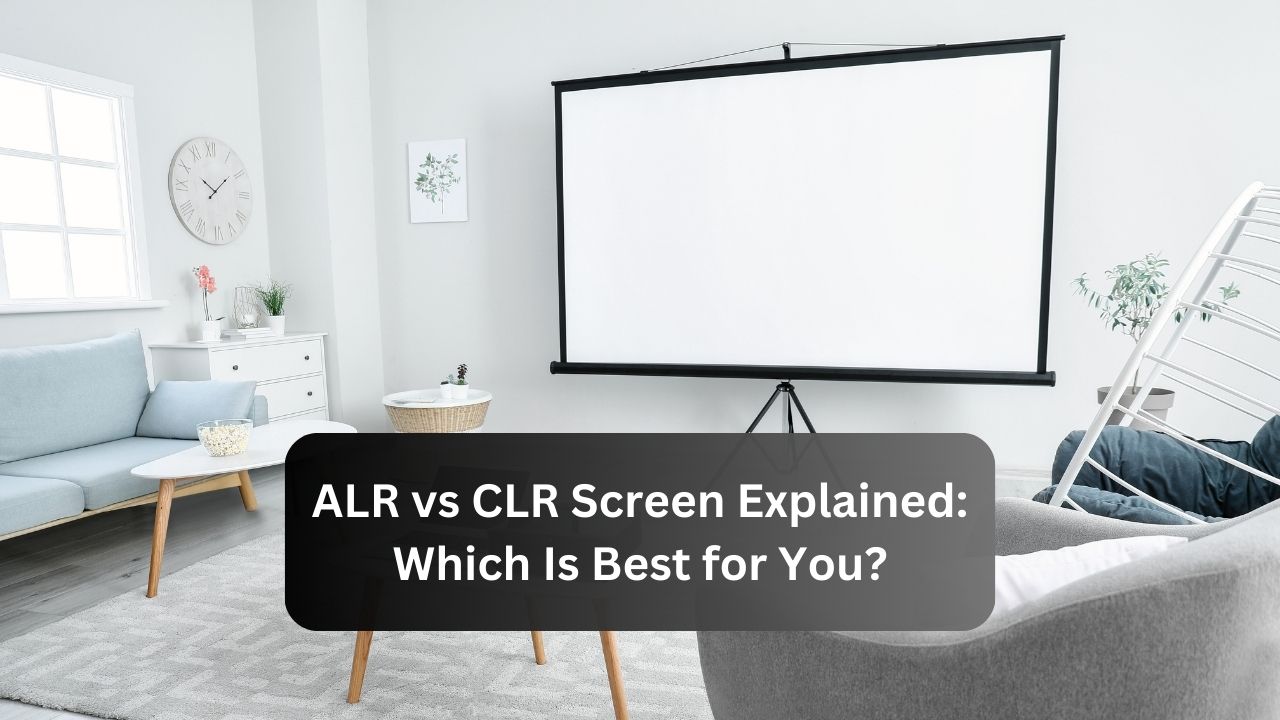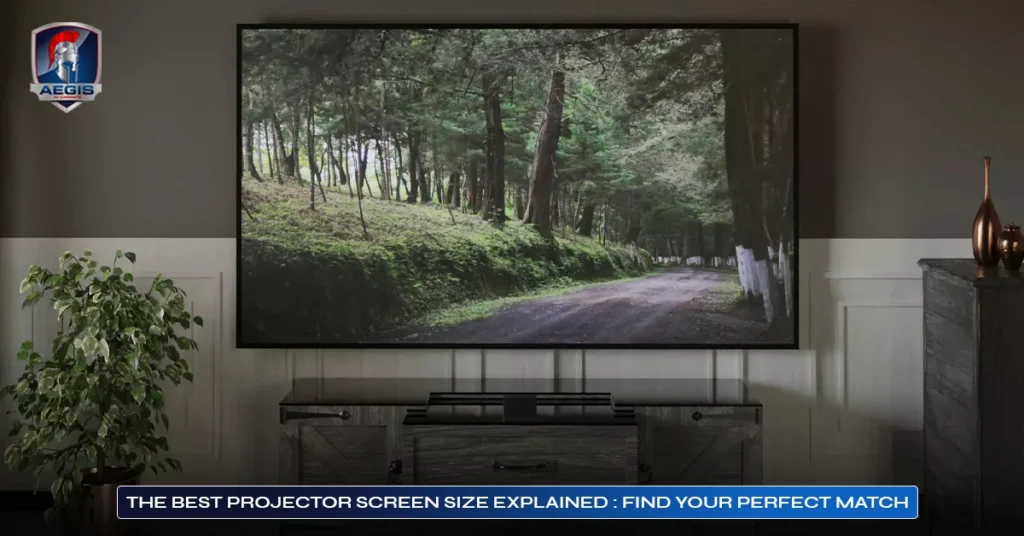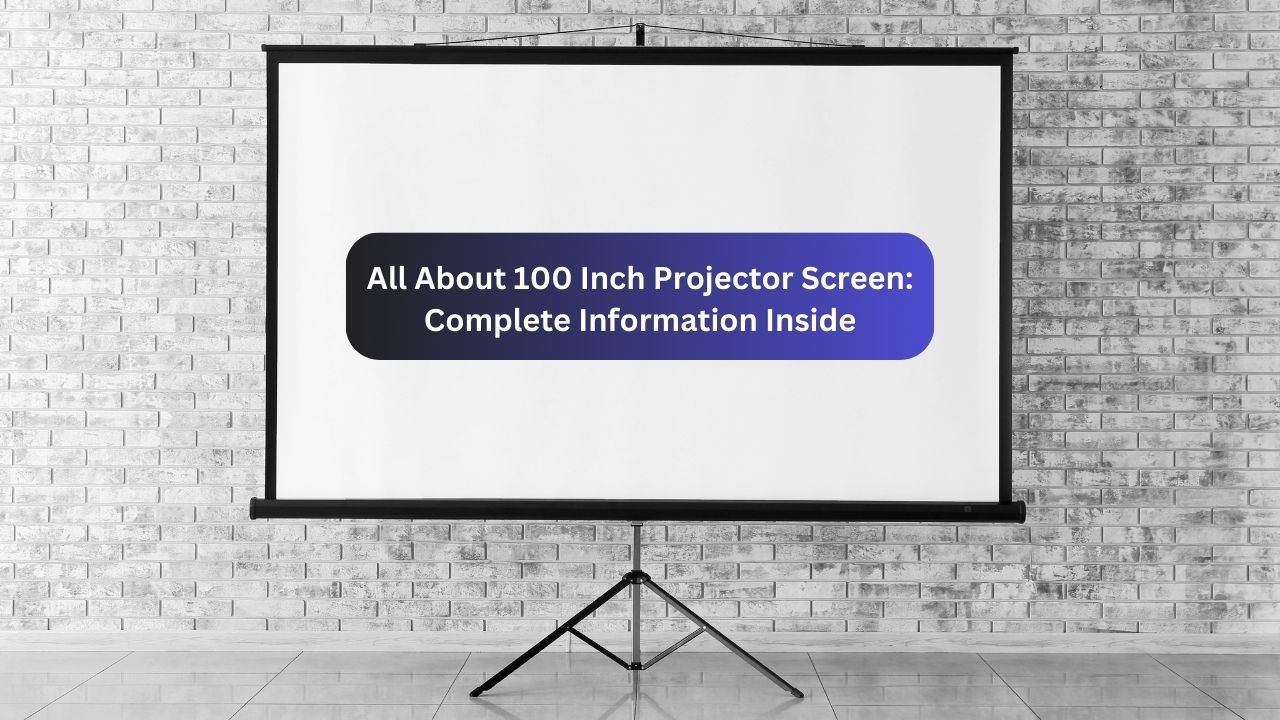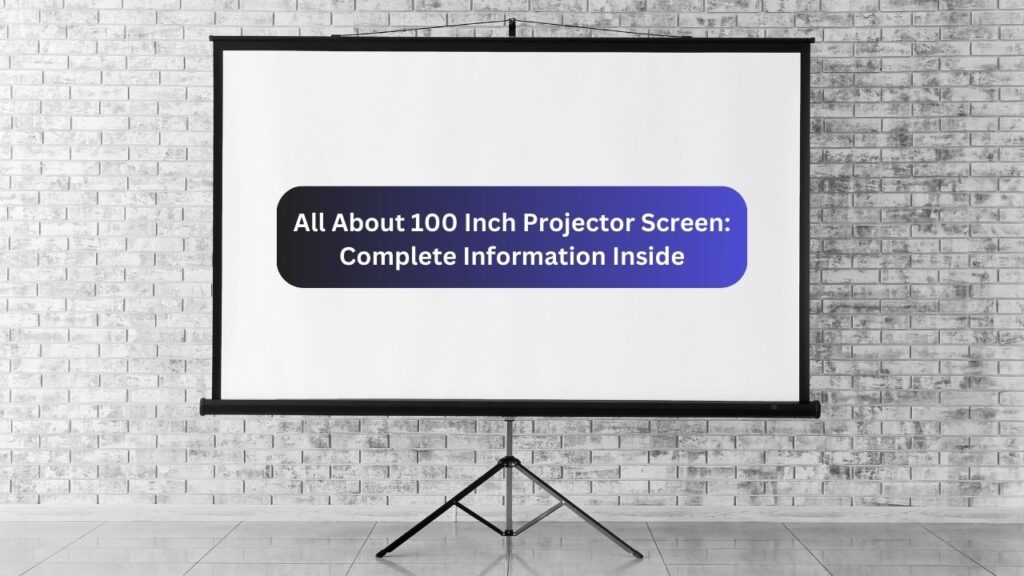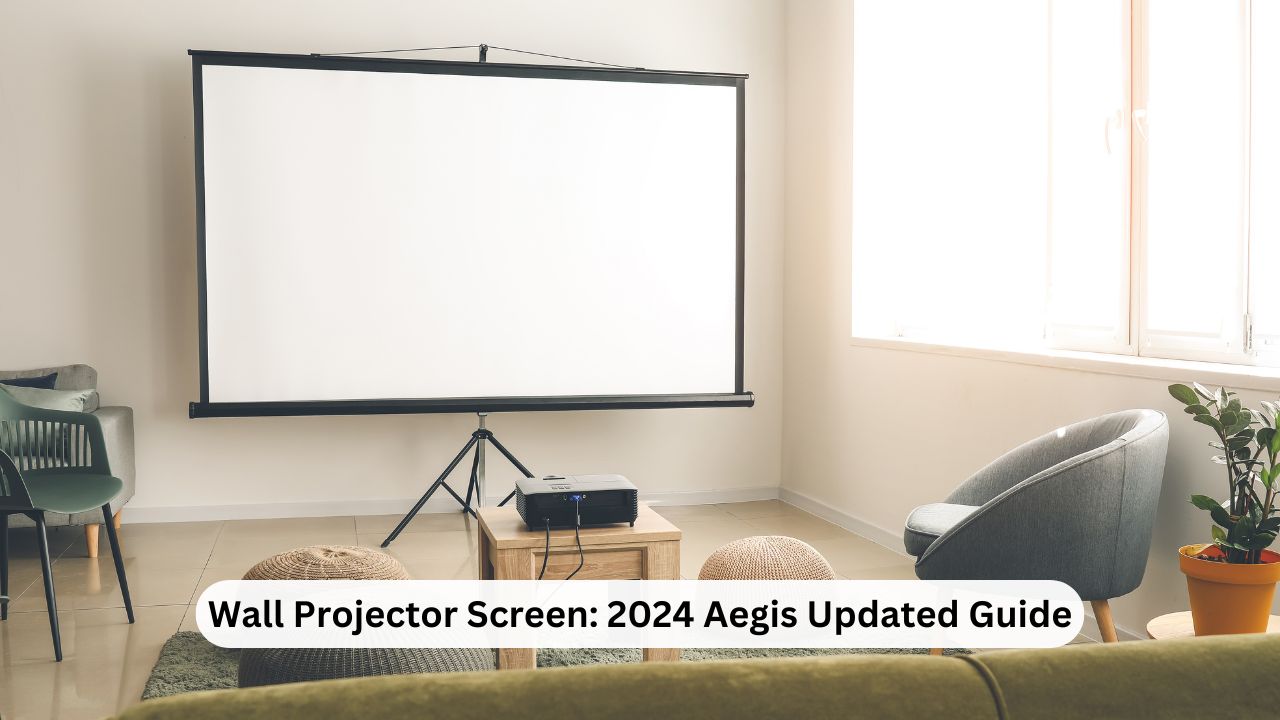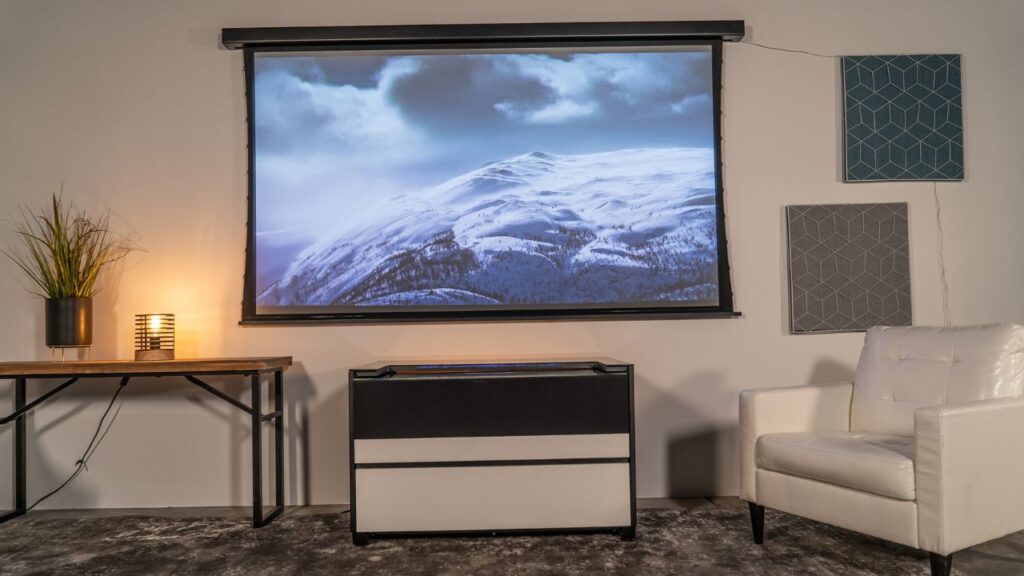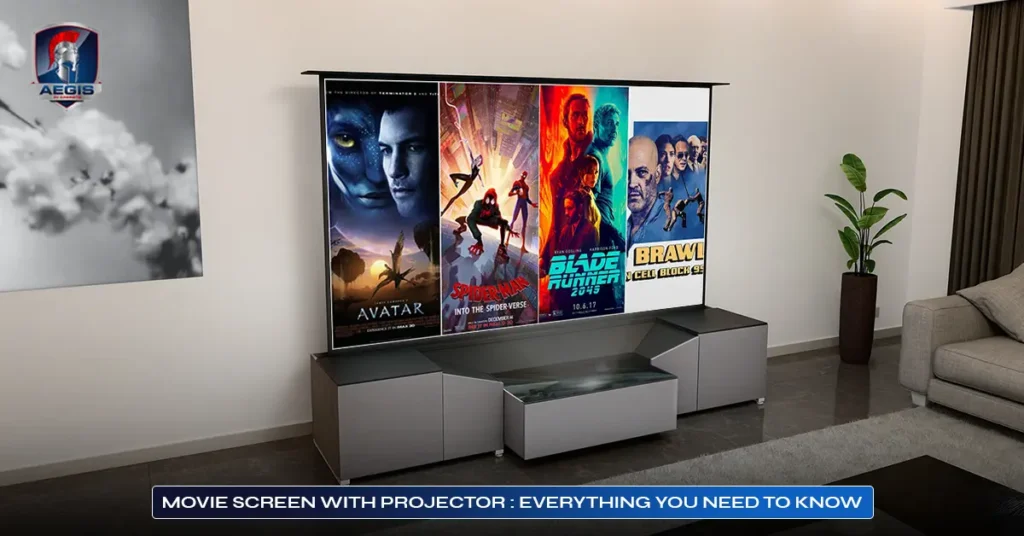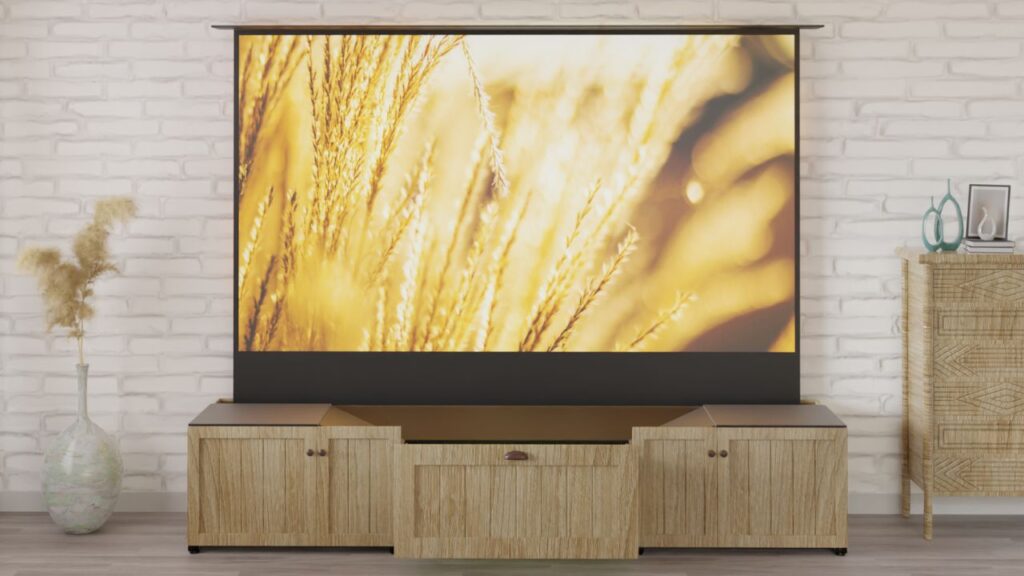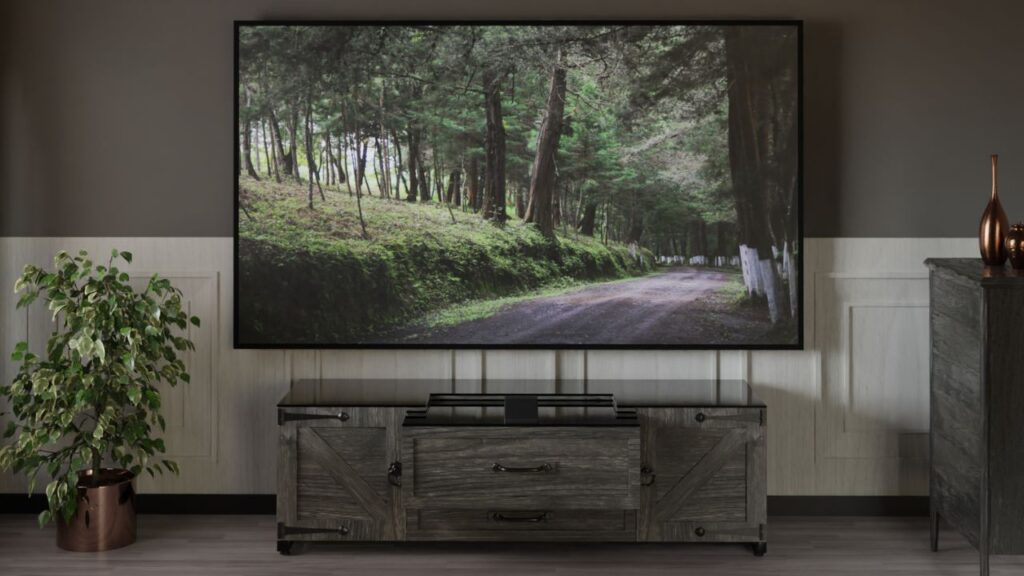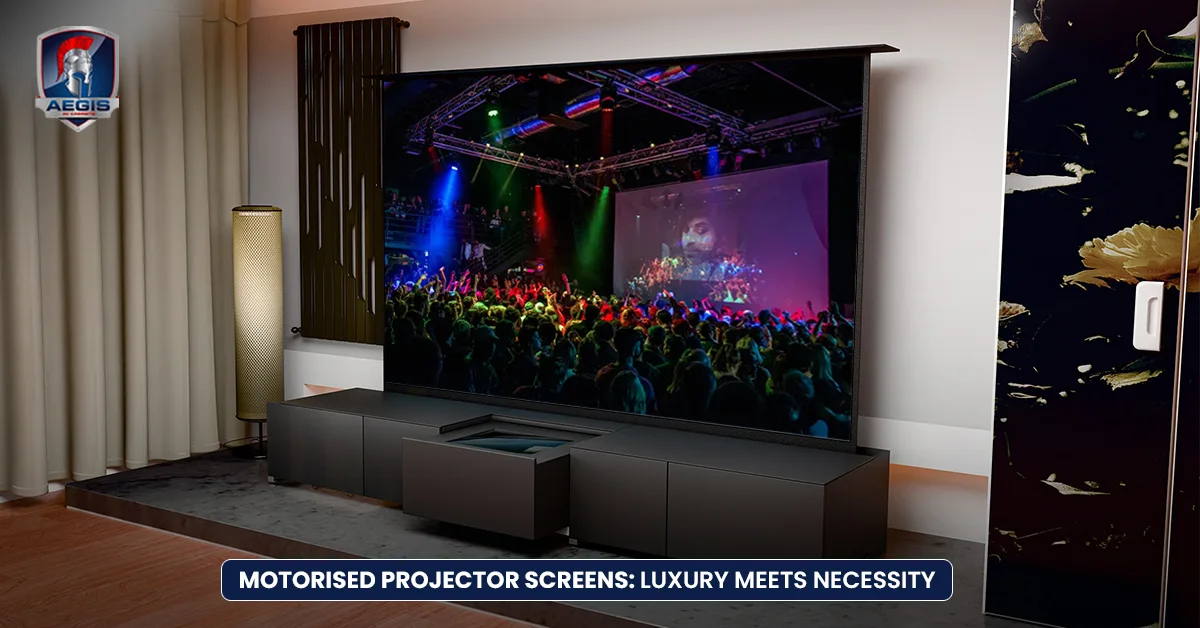

Many people are looking for simplified answers to their questions about how wide a 120 inch projector screen is. Here are the expert’s suggestions-
| Aspect Ratio | Screen/Image Size | Projection Distance (Minimum to Maximum) | Offset from Lens Center | Screw Hole Number |
| 16:9 | 120 inches (305 cm) | 151 to 165 inches (383 to 418 cm) | 7.2 inches (18 cm) | 2 |
| 4:3 | 120 inches (305 cm) | 166 to 181 inches (422 to 461 cm) | 7.2 inches (18 cm) | 2 |
| Wide to Tele | 120 inches (304.8 cm) | 139 to 226 inches (354 to 575 cm) | 5.9 inches (15 cm) | – |
The most common problem raised in recent times is that many people face issues after purchasing a projector. They don’t know how to determine the size of the projection screen and calculate the viewing distance. Here, we will explain everything, whatever you need for projector distance for 120 inch screen. It also includes comprehensive tables, understanding projector distance, why it matters, the relation between them, and many more things you should consider before buying one.
Why Distance Matters? It’s More Than You Think
It might seem like you can just place your projector anywhere in the room and call it good. But that’s not how it works. The distance between your projector and the screen plays a huge role. It affects picture quality, image size, and your overall viewing experience.
For a 120-inch screen, you need to find the right distance. Too close or too far, and you’ll lose that sharp, clear image. The goal is to position your projector at a distance that gives you crisp and vivid images without feeling like you’re sitting too close.
How Is Projector Distance Calculated?
Don’t worry, the math is easy. There’s a simple formula for calculating projector distance:
- Throw Ratio x Screen Width = Projector Distance.
The throw ratio is a number given by the projector manufacturer. Multiply that by the width of your 120-inch screen. For example, if your throw ratio is 1.5, multiply it by the screen width. You’ll get the perfect distance for your setup.
Understanding Projection Distance
That is the crucial part. Actually, the distance between your projector and the screen affects the size of the image. The picture will be larger the farther the projector is from the screen. However, this can change based on the zoom factor, aspect ratio, and other settings.
Use the following tables to estimate how far to place your projector based on your desired image size. The numbers may be slightly rounded.
Lens Shift Adjustments
Vertical Lens Shift:
Adjusts the position of the image up or down.
- Screen or Image Size
- Distance between Projector and Screen
- Distance from the center of the lens to the bottom of the image when the lens is shifted to its highest position.
Horizontal Lens Shift:
Moves the image left or right from the center. After that, distance the Image Moves when shifted to the maximum left or right position.
Relationship Between Screen Size and Projection Distance
When projecting a large image, you typically need more space between the ust projector cabinet and the screen. However, that’s no longer the case with short-throw and ultra-short-throw projectors. You can have a 100-inch screen even in small rooms.
To start, check your projector’s specifications for the screen size and the required distance. For example, if the specs say “100 inches @ 2.5 meters,” that means the projector should be 2.5 meters away for a 100-inch screen. A 16:9, 100-inch screen has a width of about 2.2 meters, so it can fit in a smaller room, like 2 to 3 pings (small spaces).
Suitable viewing distance with the best screen size:
| Screen Size (Measured Diagonally) | Viewing Distance (Seat-to-Screen) |
| 80 inches | 8.9 ft (273 cm) |
| 90 inches | 10.1 ft (307 cm) |
| 100 inches | 11.2 ft (341 cm) |
| 120 inches | 13.4 ft (409 cm) |
| 140 inches | 15.6 ft (477 cm) |
| 160 inches | 17.9 ft (545 cm) |
| 180 inches | 20.1 ft (613 cm) |
| 200 inches | 22.3 ft (681 cm) |
Breaking Down the Numbers for a 120-Inch Screen
Let’s cut to the chase—how far back do you really need to place your projector to get the most out of your 120-inch screen? Here’s a handy chart that breaks down typical throw ratios for various types of projectors:
| Projector Type | Throw Ratio | Optimal Distance |
| Short-Throw Projector | 0.5 to 1 | 5 to 8 feet |
| Standard-Throw Projector | 1.5 to 2.5 | 12 to 20 feet |
| Long-Throw Projector | 3.0 and higher | 25 feet or more |
For most standard home projectors with a throw ratio between 1.5 and 2.0, you’ll want to set up your projector about 13 to 17 feet away from the screen. This will give you a full 120-inch image without compromising on quality.
Just imagine sitting back with popcorn in hand, watching a blockbuster, and knowing you’ve nailed the perfect setup—satisfaction, guaranteed.
Benefits of a 120 Inch Projector Screen
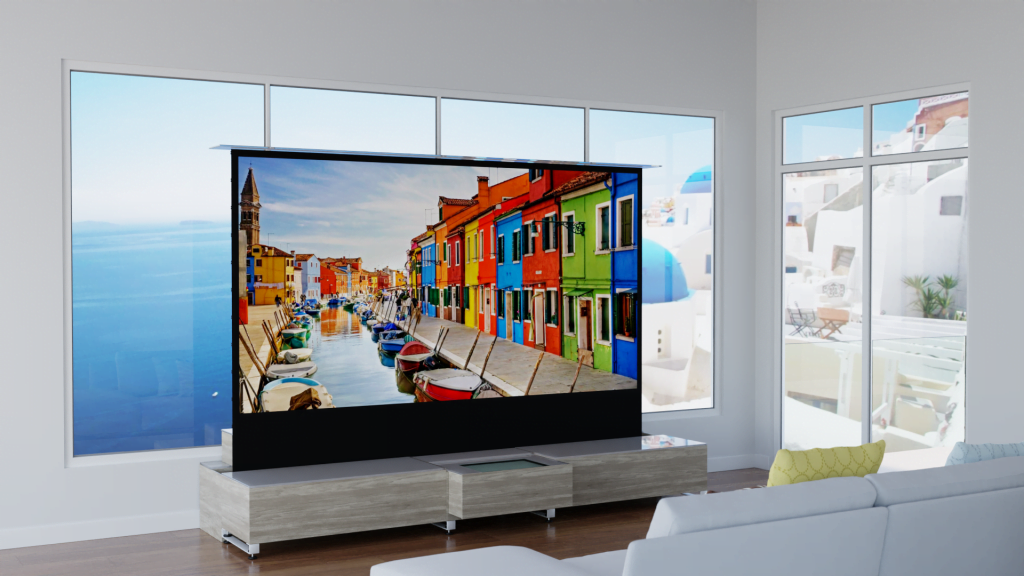
A 120-inch projector screen offers more than just an amazing viewing experience. Here are some key benefits:
Flexibility: Projector screens are easy to set up and take down. You can enjoy a home theater and quickly reclaim the room for other activities.
Cost-Effectiveness: Projector screens are more affordable than large flat-screen TVs. You get a much bigger screen for less money.
Versatility: They’re perfect for movie nights, gaming, presentations, or sports viewing parties.
Factors to Keep in Mind
Setting up a projector is about more than just plugging in some numbers. There are several important factors that can affect how well your setup works:
Projector Type: Not all projectors are the same. Some, like short-throw projectors, are designed for closer distances. Others need to be positioned further back.
Room Size: If your room is small, your placement options might be limited. Make sure your projector isn’t placed too far away from the screen in larger rooms.
Zoom Capabilities: Some projectors come with zoom lenses. These lenses allow you to adjust the image size without physically moving the projector—very convenient!
Brightness: The further your projector is from the screen, the dimmer the image might get. Make sure your projector’s brightness (measured in lumens) is strong enough for the distance.
Common Mistakes to Avoid
Even when you try your best, it’s easy to make mistakes with projector setups. Here are a few common ones to avoid:
Ignoring the Throw Ratio: This number might seem small, but it is crucial. Don’t overlook it; it directly affects your image size and quality.
Underestimating Screen Size: A 120-inch screen is pretty big. Ensure you have enough room for both the screen and the projector at the correct distance.
Overlooking Brightness: The bigger your screen, the more brightness you’ll need. If your projector isn’t bright enough, your image could look dull, especially in a well-lit room.
Not Checking for Obstacles: Ensure nothing stands between your projector and the screen. Shadows or objects blocking the view will ruin the experience.
Pro Tip: Use a Measuring Tape
It might sound obvious but don’t guess the distance. Take a measuring tape and measure your distance from the projector lens to the screen. This will help ensure that your image is clear and correctly aligned.
FAQs
What Size is a 120-Inch Display?
A 120-inch screen has the following dimensions: Viewable Size: 58.8 inches high by 104.6 inches wide. Overall Size: 63.5 inches high by 109.3 inches wide.
What is the Best Distance for a Projector?
The throw distance is the space between your projector and the screen. Check the projector’s specs to get the best image quality. Generally, place the projector 1.5 to 2 times the screen width away.
How Many Feet is a 120-Inch Screen?
A 120-inch screen is about 105 inches wide, or nearly 9 feet, and 59 inches high, or nearly 5 feet.
How High Should a 120-Inch Projector Screen Be from the Floor?
For a 120-inch screen, which is about 59 inches high, the bottom should be about 40 inches from the floor. This means placing the screen roughly 1/3 of the height above the floor.
How Far Does a Projector Need to Be from a 120-Inch Screen?
For a 120-inch screen, the projector should be positioned between 12 and 18 feet away. This distance ensures a great viewing experience and immersive image.
Bottom Line
You understand everything about projector distance for a 120-inch screen. There is no need to face problems after buying a projector. We hope now you can make your decision on your own. A 120-inch projector screen can turn your home into a movie paradise. Understand how screen size and projector distance work together to get the best setup.
Check the throw ratio, room size, and light in the room to get the best picture quality. You’ll enjoy a fantastic home theater experience with the right projector and screen.

